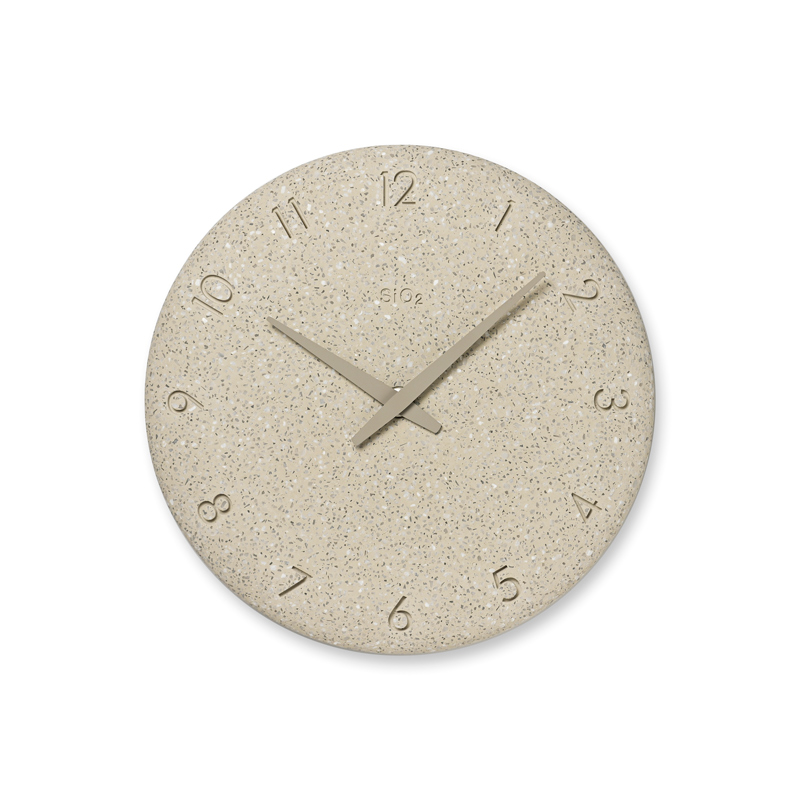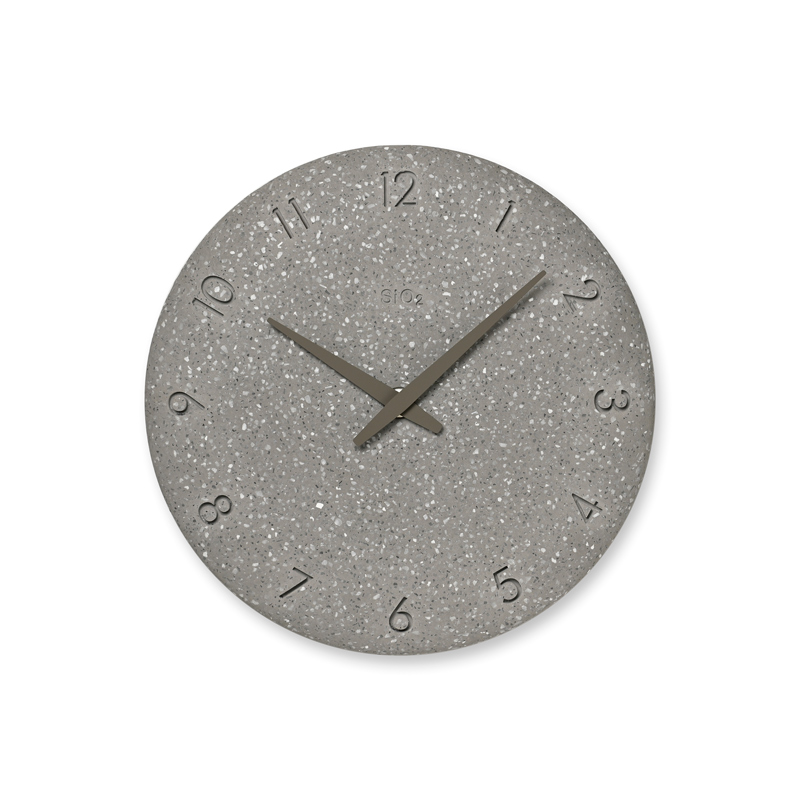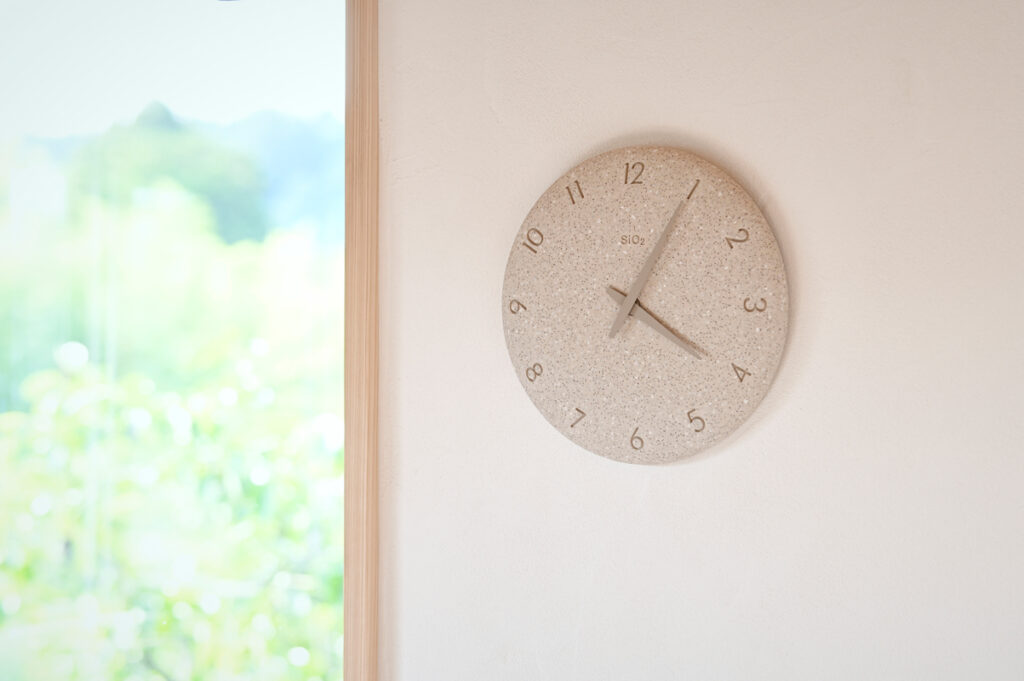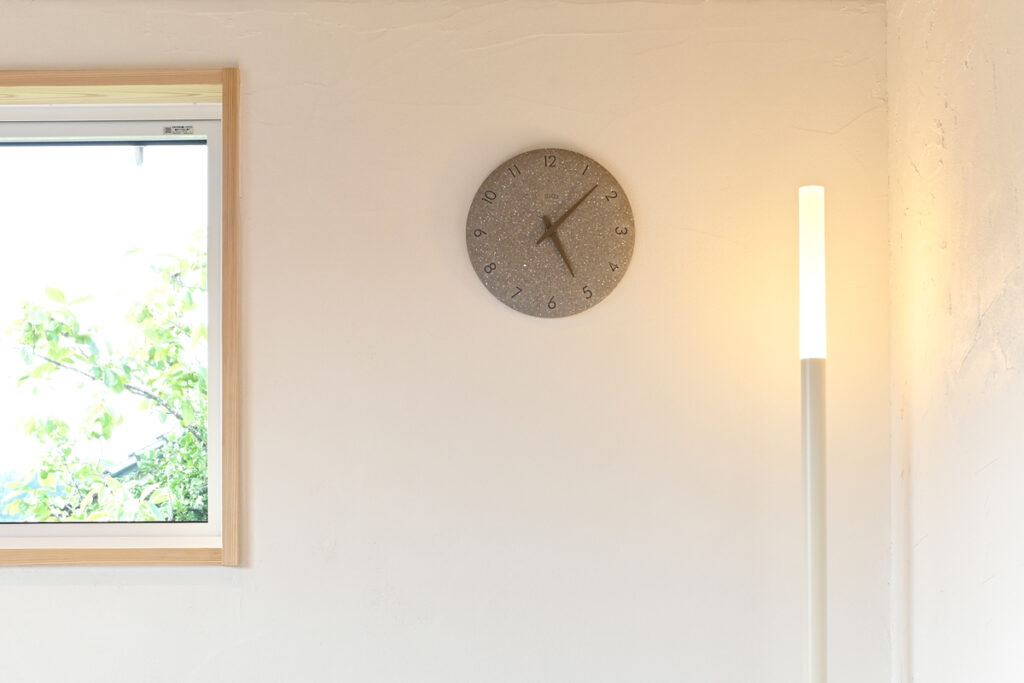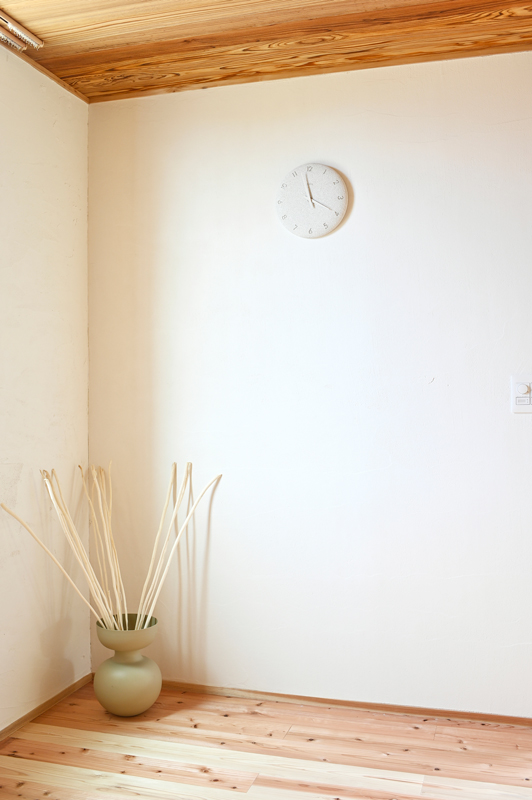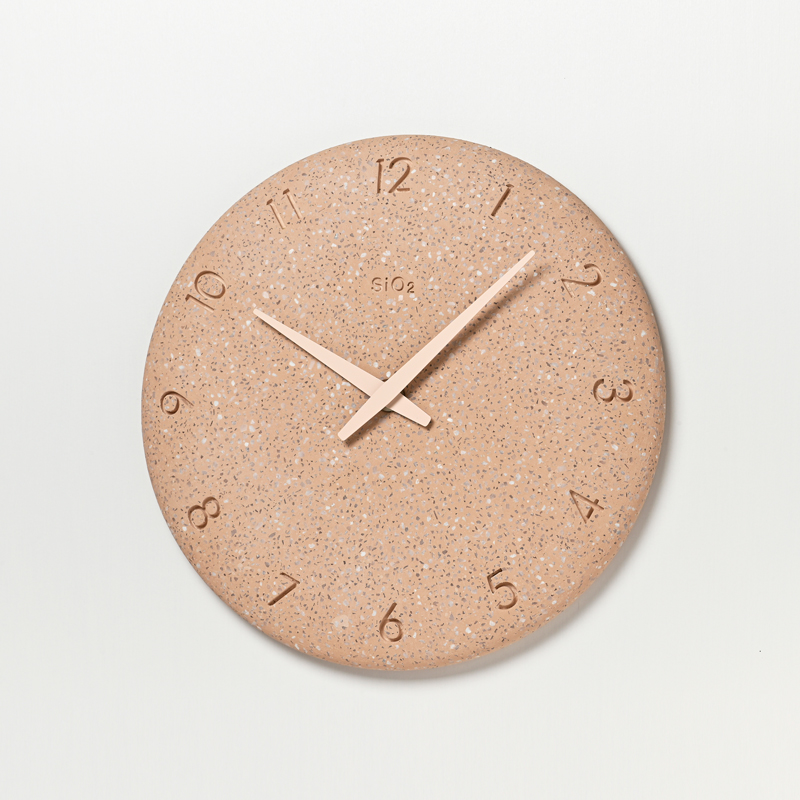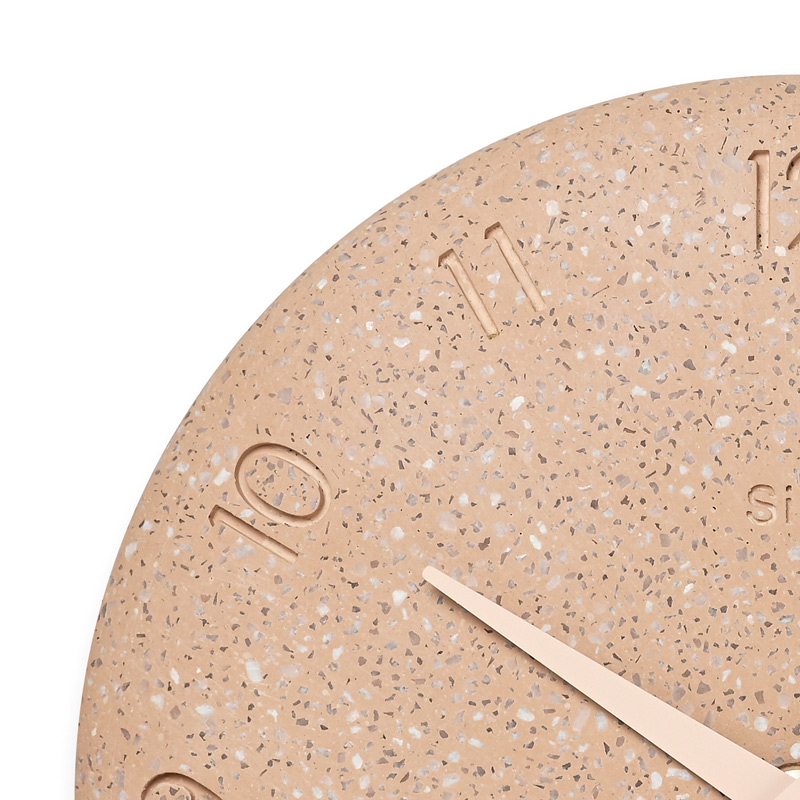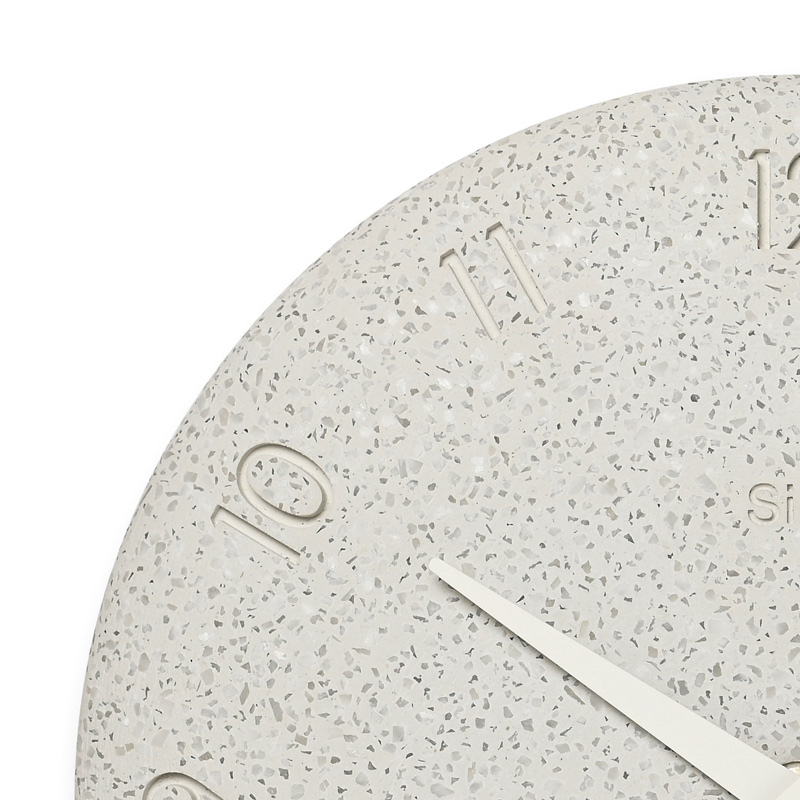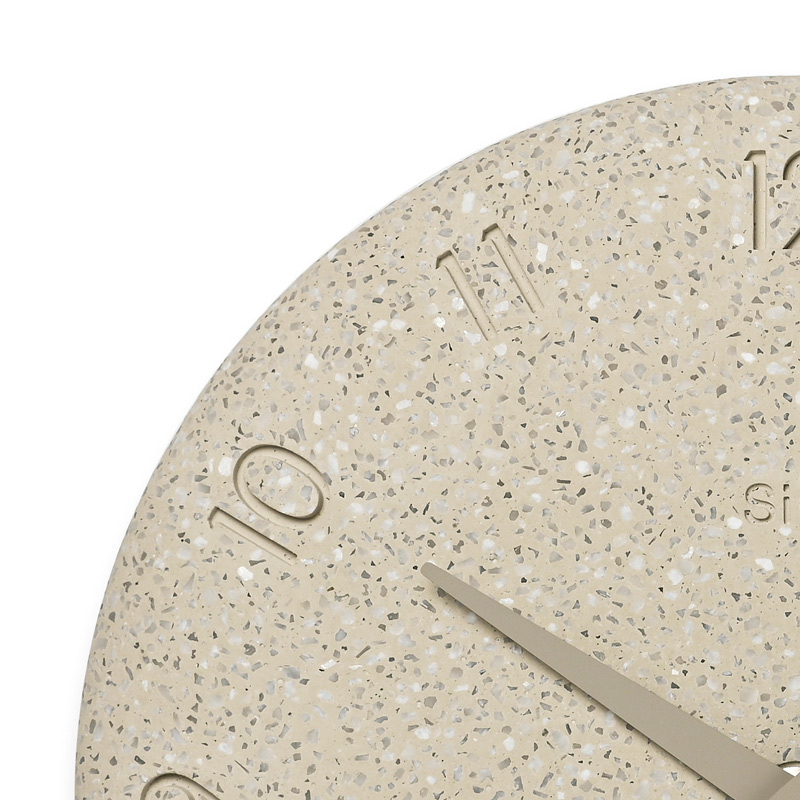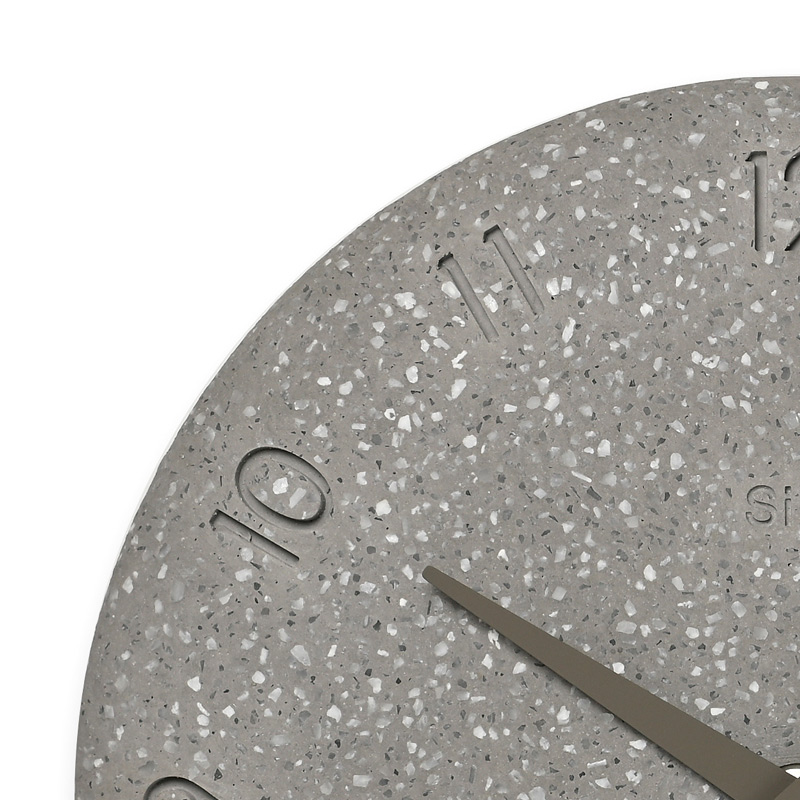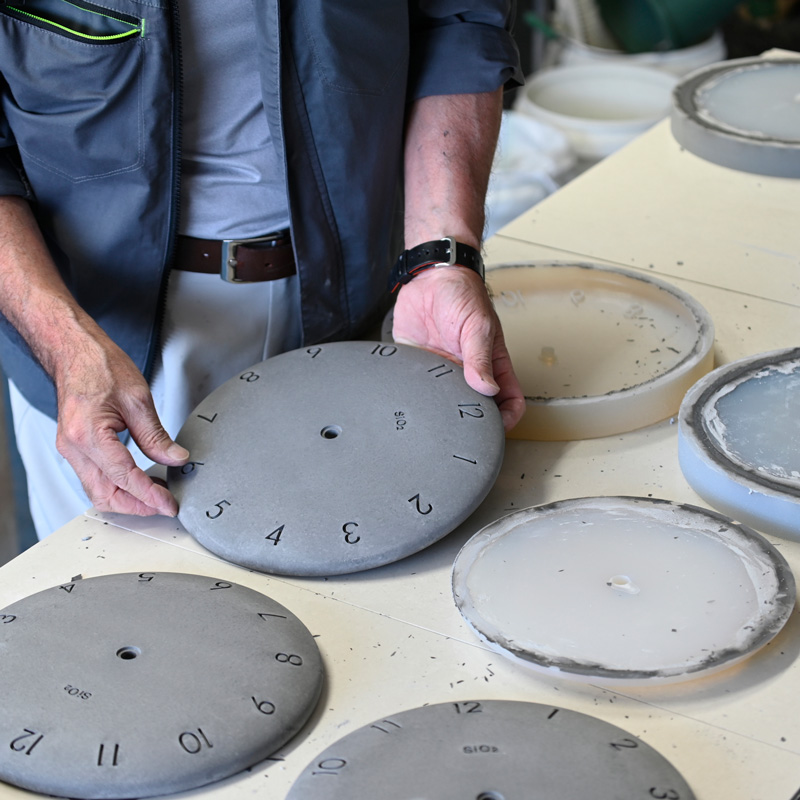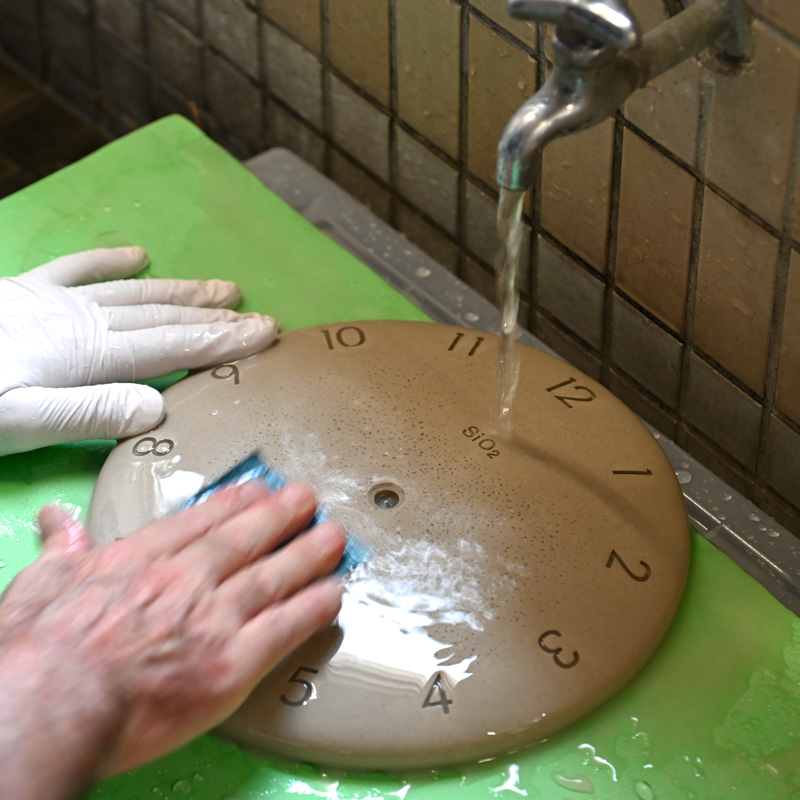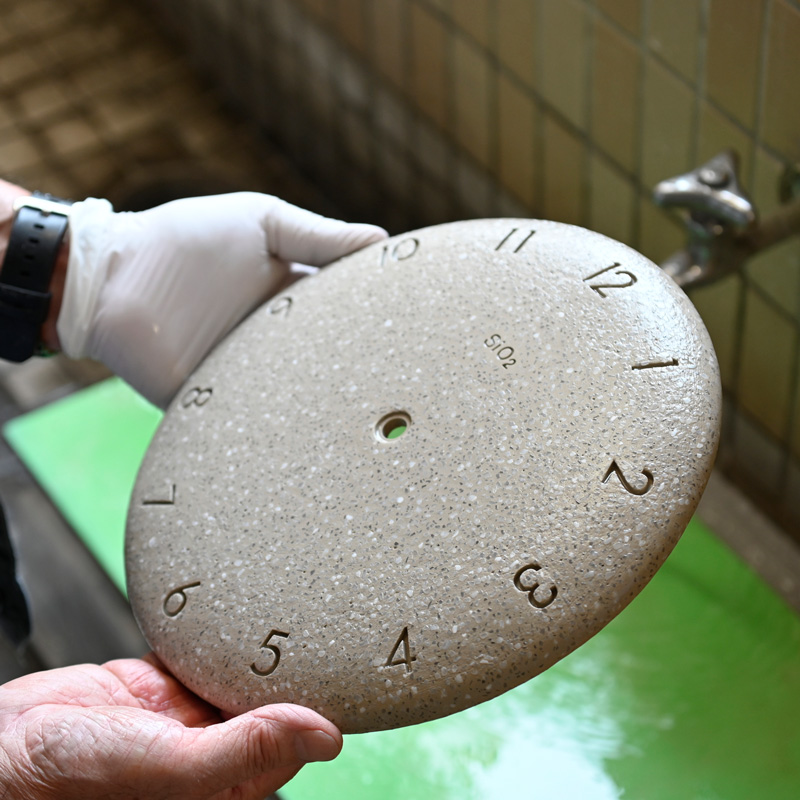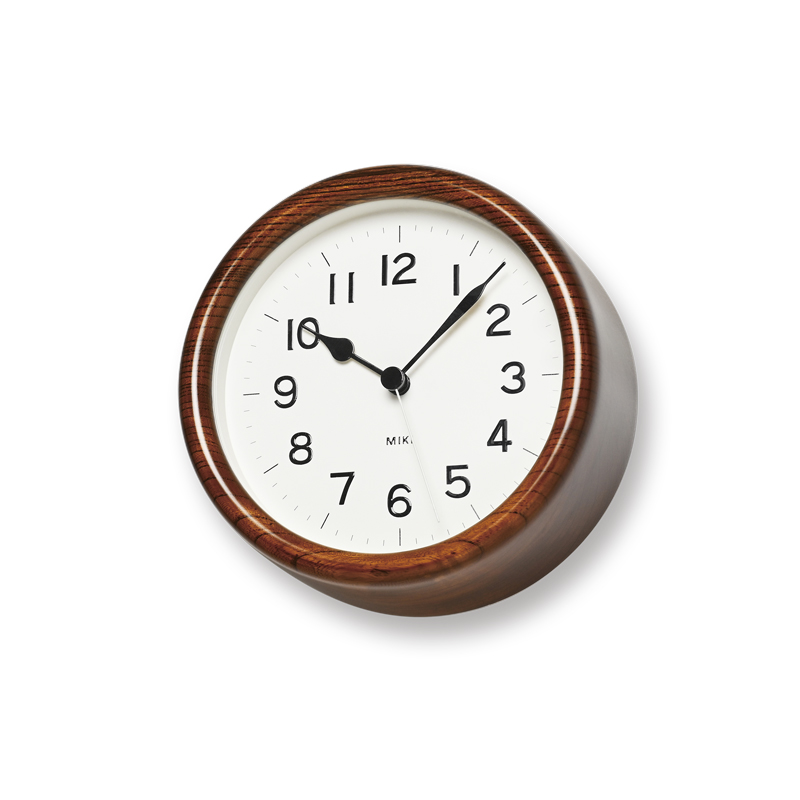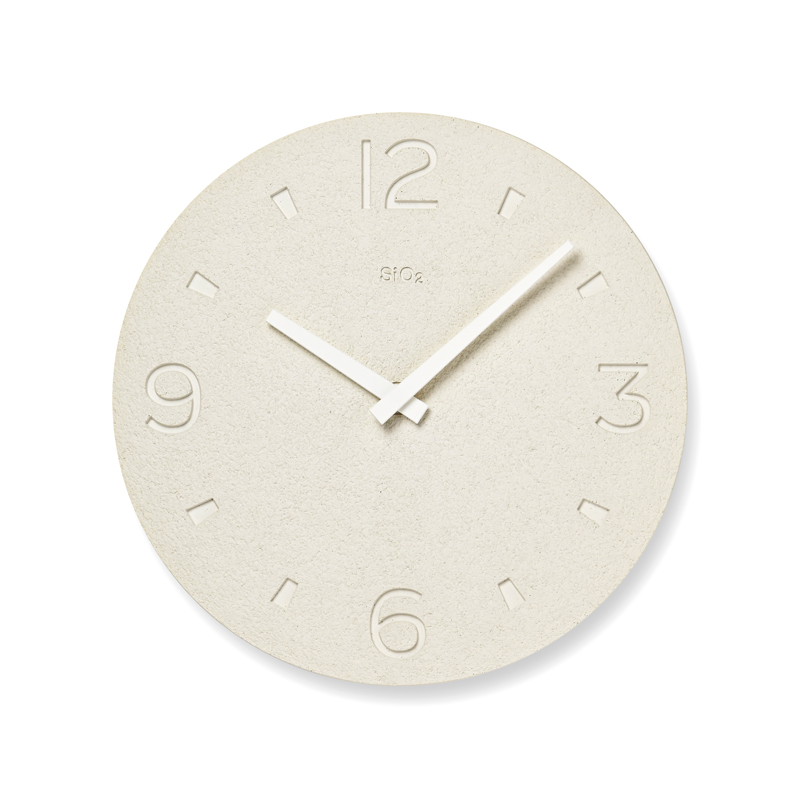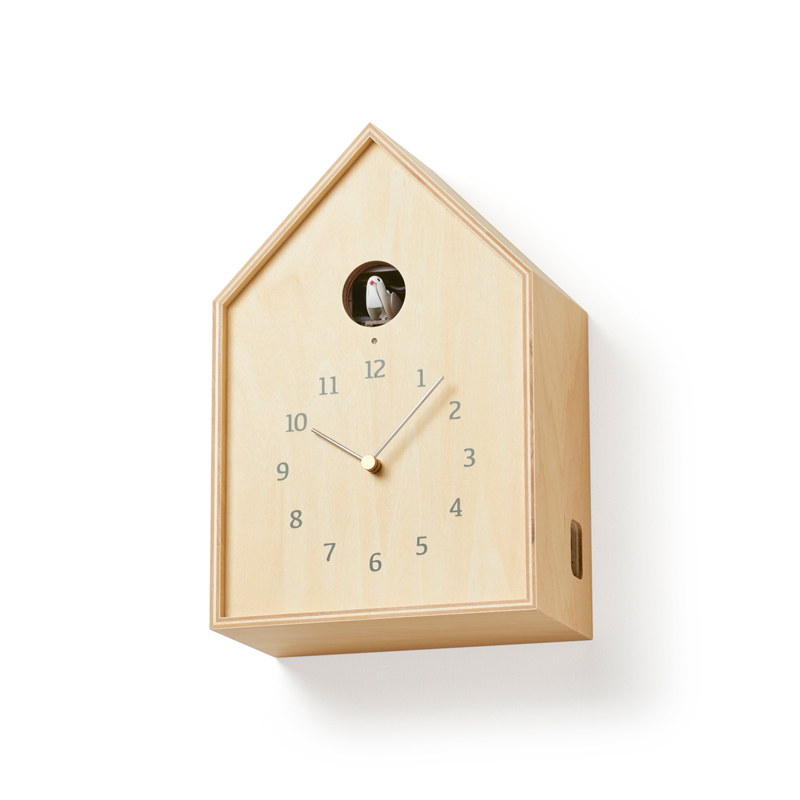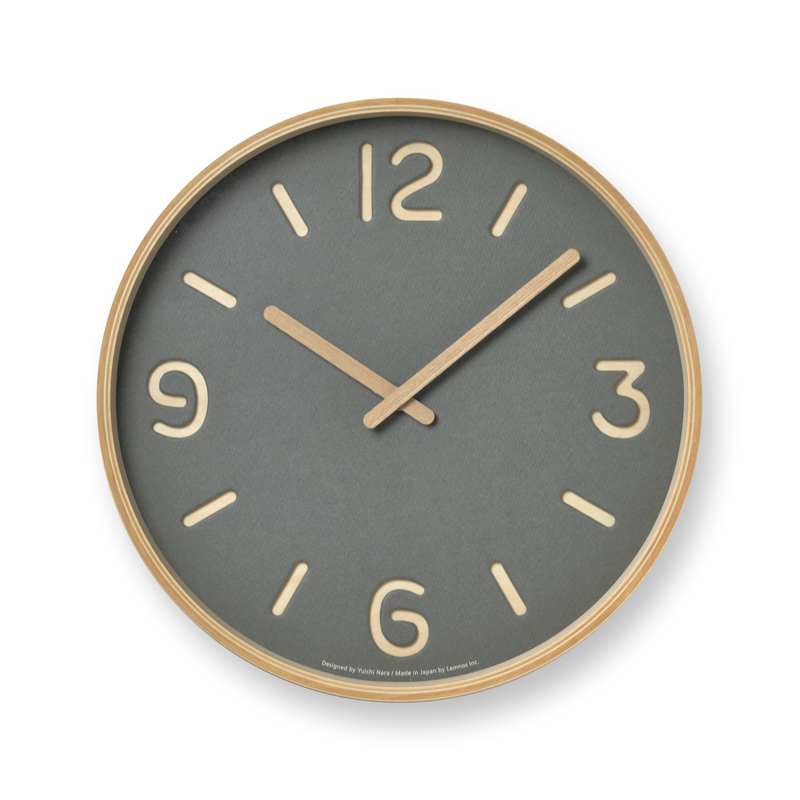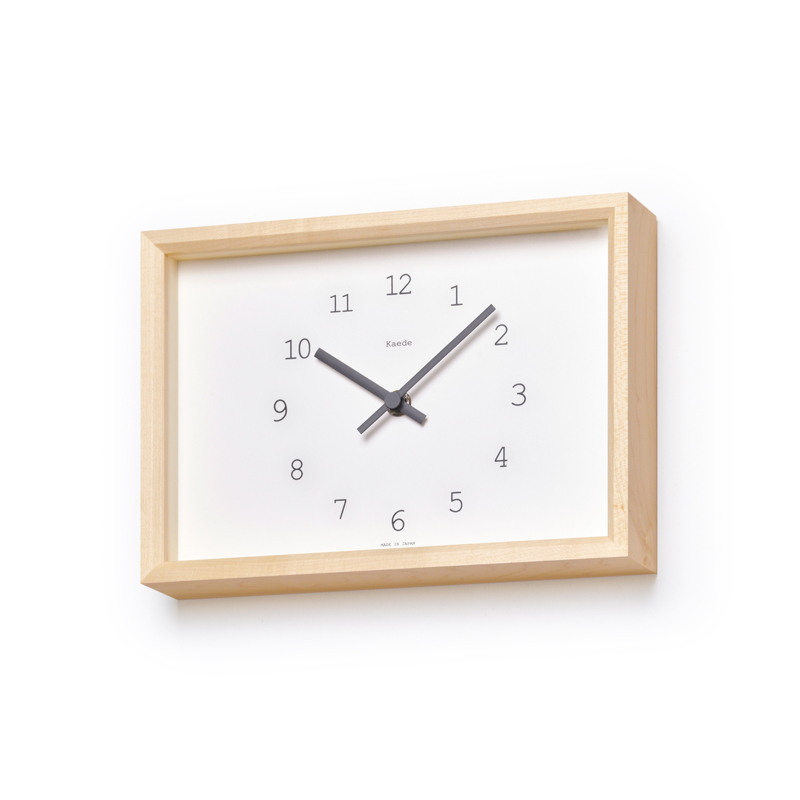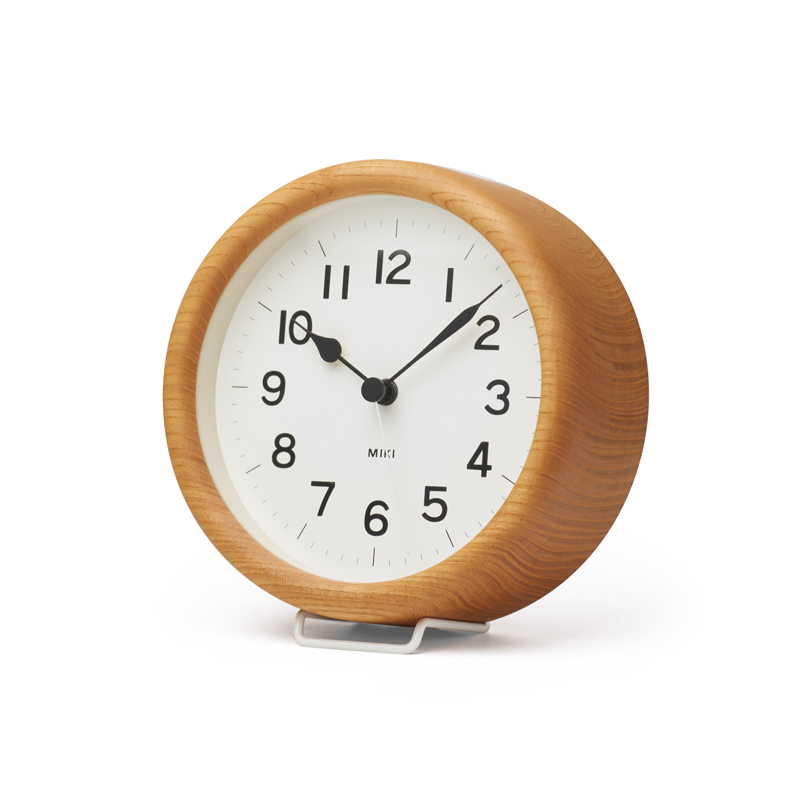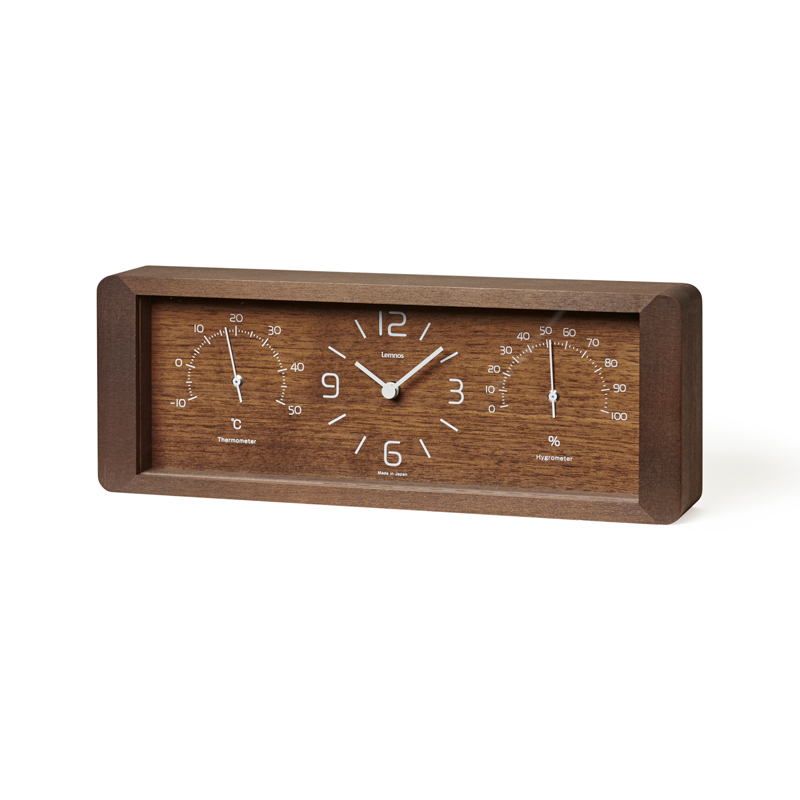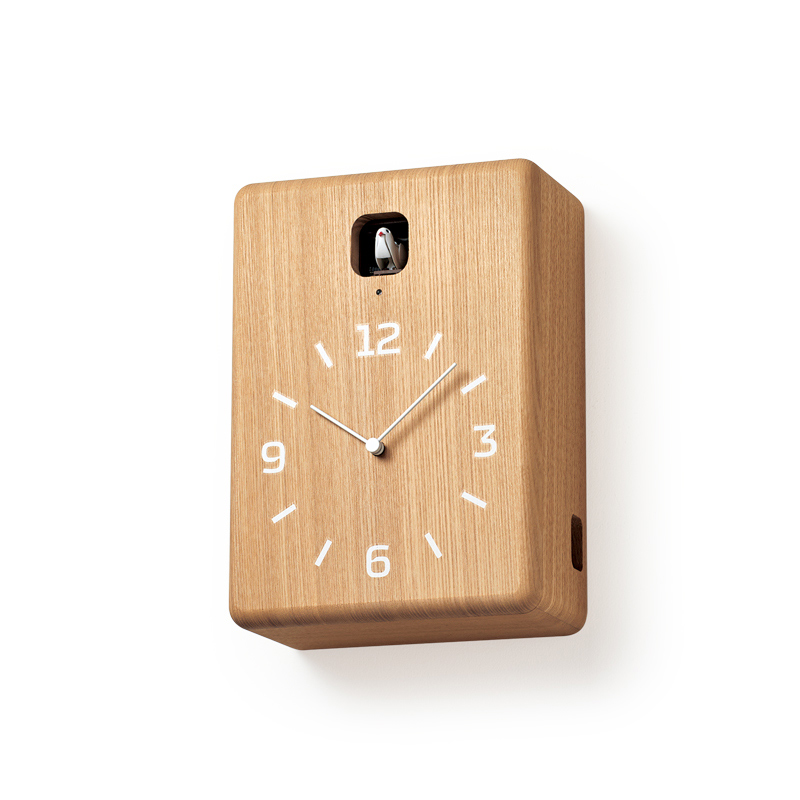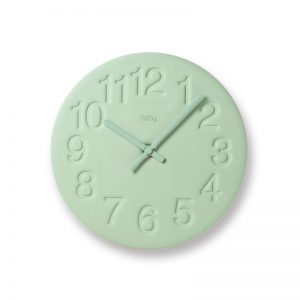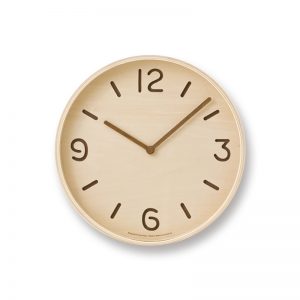SiO2 CLOCK [ Washed finish ]
design : Yuichi Nara
This is the third SiO2 CLOCK (diatomaceous earth clock) in the series, featuring the distinctive “Araidashi” washed finish.
Araidashi is a plastering technique that involves mixing gravel, pebbles, and other aggregates with mortar prior to application. Before it hardens, the surface is washed away, revealing the aggregates and presenting them as integral expressions of the wall or floor. The technique offers limitless combinations of base materials, aggregates, sizes, and colors, allowing for the creation of diverse expressions.
In this clock, pure white crystalline limestone aggregates, known as “Kansuiseki,” are used, which are also employed in landscaping, etc. If you examine the details, you will notice that each stone reflects light differently, giving them various expressions.
The gently curving shape of the clock creates changes in light and shadow on the surface, accentuating the expression of the stone. It is very difficult to wash away the surface of the stone cleanly without destroying the edges of the numbers engraved on the clock, and the delicate handiwork of the craftsmen at “soil” has made this possible.
This time, Lemnos aimed to construct a product, namely a clock, using traditional materials and techniques without excess or deficiency. There are four color variations: white (diatomite from Akita) and pink (diatomite from Noto), both of which showcase the natural colors of diatomaceous earth, along with beige and gray, the colors of which are adjusted with pigments.
Good Design Award 2024(Japan)
![]()
![SiO2 CLOCK [ Washed finish ]](https://www.lemnos.jp/en/wp-content/uploads/2023/08/NY23_06_PK.jpg)
NY23-06
- Size
- φ255 × d37mm
- Weight
- 800g
- Material
- Diatomaceous Earth, Mortar, Crystalline limestone(寒水石)
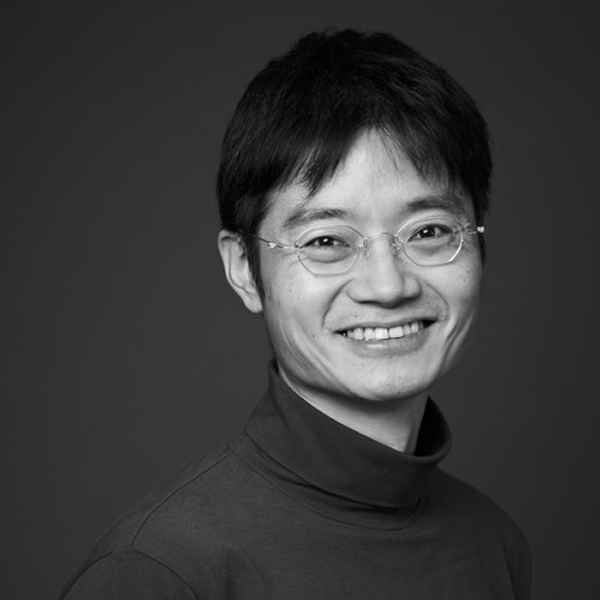
Yuichi Nara
Born in Tokyo, 1977. In 1999, he graduated from the Construction Department Architecture Course at Yokohama National University. Moved to Italy in 2000. Began designing following a period working at a glass studio and an architect’s office in Venice. In 2006, graduated from Venezia Construction University. During a trip to Noto, Japan, he was so impressed with the richness of the nature and lifestyle, he decided to return to Japan and moved to Notojima. In 2007, he established the Noto design office. Studying local materials and learning local techniques and applying them to his work, he attempts to design products that enrich everyday life. Alongside his design activities, he also grows rice in a rented untilled paddy field.
http://www.notodesign.jp/


